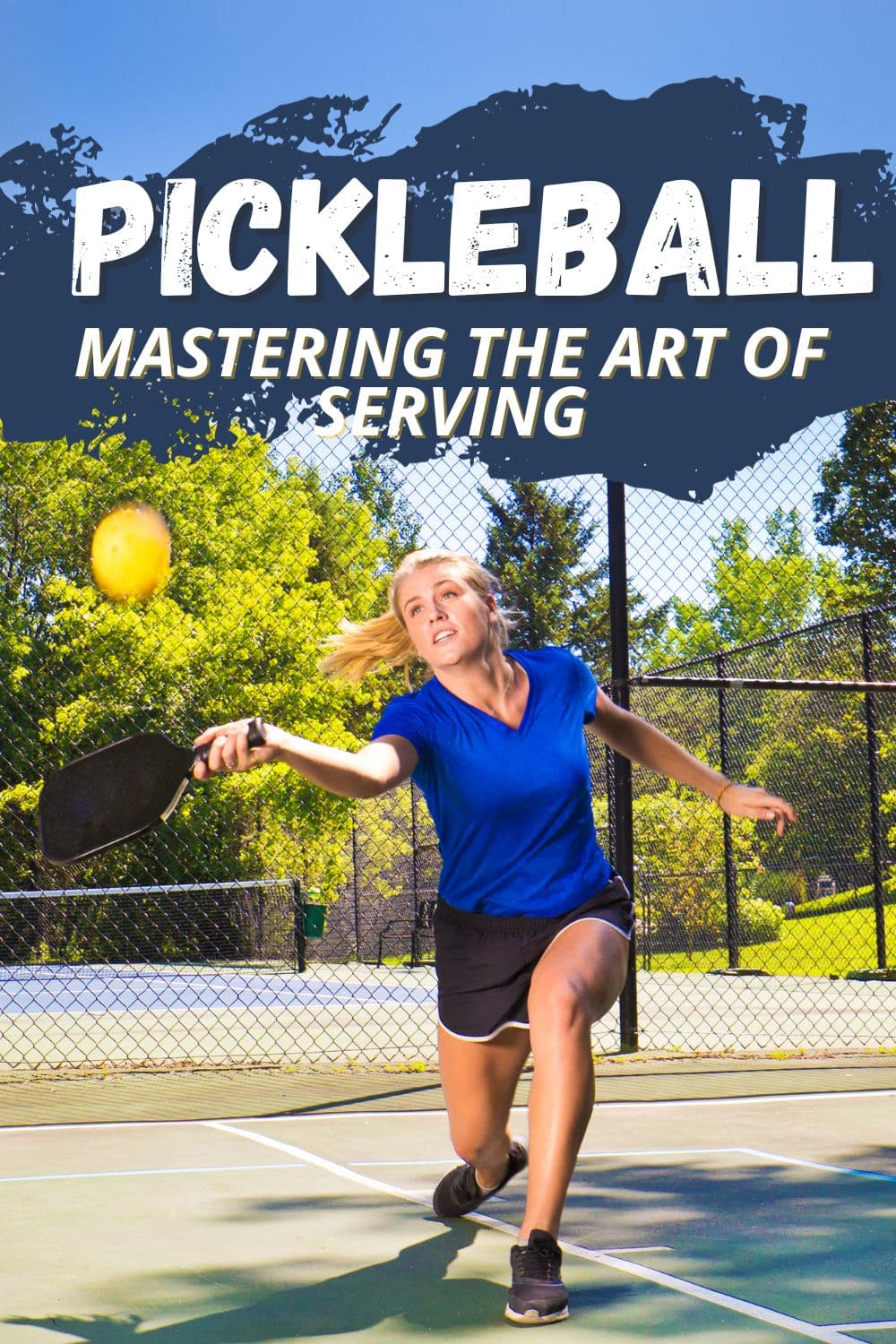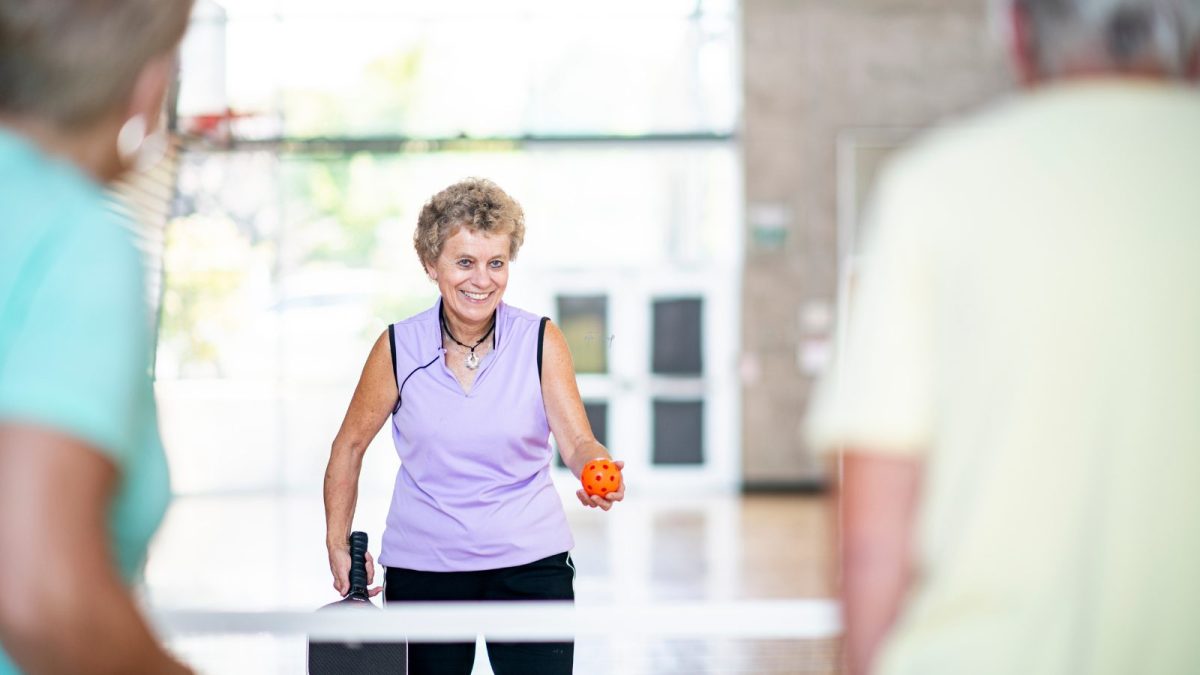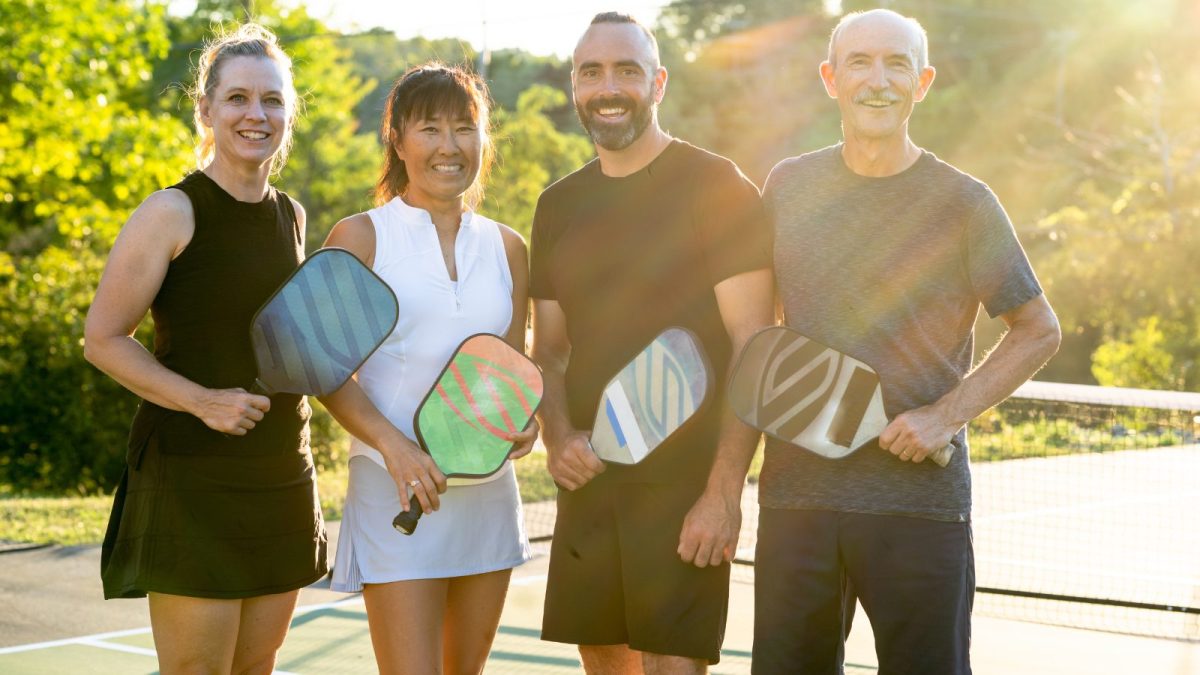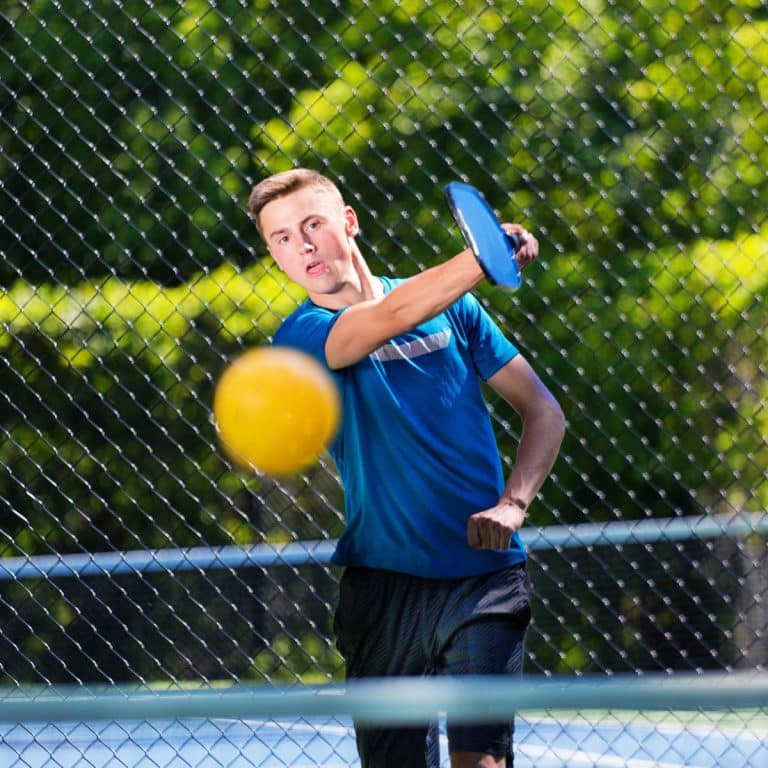Mastering the Art of the Pickleball Serve
Pickleball, the beloved paddle sport, has taken the world by storm. At the heart of this game lies the pickleball serve, a fundamental aspect that can determine the course of any match. Whether you’re a novice learning the ropes or an experienced player aiming for perfection, understanding the nuances of a great pickleball serve can significantly enhance your game. In this comprehensive guide, we’ll explore various pickleball serve techniques, delve into expert tips, and even pose some thought-provoking questions to help you refine your skills.

The Foundation: Grip, Stance, and Toss
Before we explore advanced techniques, let’s revisit the basics:
Grip:
- Shoulder-Width Stance: Stand with your feet shoulder-width apart, ensuring a stable base for your serve.
- Square Your Shoulders: Face the net squarely, positioning your shoulders parallel to the net.
- Bend Your Knees: Maintain a slight knee bend to promote balance and agility during the serve motion.
Stance:
- Shoulder-Width Stance: Stand with your feet shoulder-width apart, ensuring a stable base for your serve.
- Square Your Shoulders: Face the net squarely, positioning your shoulders parallel to the net.
- Bend Your Knees: Maintain a slight knee bend to promote balance and agility during the serve motion.
Toss:
-
- Consistent Toss Height: Practice a consistent toss, releasing the ball just above your hitting zone to ensure a comfortable contact point.
- In Front and Slightly Diagonal: Toss the ball slightly in front of you and at a slight diagonal angle, allowing you to move smoothly into your hitting position.
- Toss Height Adjustment: Adjust the height of your toss based on your preference and the serve you intend to execute, ensuring it reaches the desired height before your swing.

Pickleball Serve Techniques
Mastering pickleball serve techniques is the key to a strong game. For pickleball beginners, focusing on fundamentals like grip, toss, and body stance is critical to building a solid foundation. As players improve, advanced pickleball serve techniques, such as power serves, slice serves, and strategic placement like centerline and kitchen corner serves, become essential skills, adding depth and strategy to gameplay. Understanding and practicing these techniques can transform a novice into a formidable opponent on the pickleball court.
The Techniques
- The Power Serve: Harnessing the energy from your legs and core, the power serve is about a controlled explosion. Use a flat trajectory, catching opponents off-guard with the sheer speed of your serve.
- The Slice Serve: Adding spin to your serve can be a game-changer. With its curving trajectory, the slice serve confuses opponents, making returns challenging. Experiment with paddle angles for precision.
- The Lob Serve: The lob serve can be your savior under pressure. A high toss and a gentle stroke create a lofty shot, allowing you time to reset your position while your opponent retrieves the ball from the backcourt.
- The Drop Shot Serve: A delicate touch can deceive even the most agile opponents. The drop shot serve, resembling a regular serve, requires finesse. Soften your grip and lessen your swing for a shot that barely skims the net, catching your opponent off balance.
- The Centerline Serve: Aim the ball right down the middle of the court, making it tricky for your opponent to decide how to hit it. It’s like sending a surprise right at the heart of their court, causing a moment of confusion. By using this strategic serve, you keep your opponents on their toes, making it harder for them to return the ball effectively.
- The Kitchen Corner Serve: Skillfully aim your serve to land at the corner of your opponent’s kitchen or non-volley zone. It’s like delivering a precision shot, making it challenging for your opponent to respond without stepping into the kitchen. This strategic move helps you control the game by limiting your opponent’s options.

Pickleball Serving Tips to Improve Your Game
Embracing some valuable pickleball tips can elevate your game and add finesse to your plays. Whether you’re just starting or aiming to refine your skills, these tips are like secret ingredients that spice up your gameplay, making you a better player. From mastering essential footwork to understanding strategic shot placements, these tips are your allies on the court, guiding you toward becoming a more confident and skilled pickleball enthusiast.
Tips
- Master Your Grip: Hold the paddle comfortably, allowing flexibility and control. A relaxed grip helps you adapt to different serve techniques.
- Focus on Consistent Toss: Practice a consistent toss that reaches the desired height just above your hitting zone. A reliable toss sets the stage for a well-executed serve.
- Bend Those Knees: Maintain a slight knee bend to ensure balance and agility. Proper posture empowers your serve and allows for quick movements on the court.
- Engage Your Core: A strong core provides stability and power. Engage your abdominal muscles during your serve, allowing for a more controlled and impactful shot.
- Eye on the Ball: Keep your eyes on the ball throughout your serve. Visual focus enhances your accuracy and helps you make split-second adjustments as needed.
- Experiment with Spin: Explore different spins, such as topspin, backspin, or sidespin, to add variety to your serves. Spin makes your serves harder to predict and return.
- Mix Up Your Placement: Vary your serve placement between corners, middle, and sidelines. Keep your opponents guessing and off balance by changing the location of your serves.
- Perfect Your Footwork: Good footwork ensures proper positioning. Practice lateral movements to cover the court effectively, allowing you to reach and serve a wider range.
- Stay Relaxed and Breathe: Relax your shoulders and maintain a calm demeanor. Deep breaths before your serve help alleviate tension and keep you focused on your technique.
- Practice, Practice, Practice: Consistent practice hones your skills. Dedicate time to serving drills and working on different techniques to build confidence and precision.
Remember, pickleball is as much about having fun as it is about winning. Embrace these tips with a positive attitude, and soon enough, you’ll find your serves becoming stronger, more accurate, and a powerful asset to your game!
The pickleball serve, often underestimated, is an important, strategic part of your game. You can transform your serve into a formidable shot by understanding the core techniques, experimenting with spins, and incorporating psychological strategies. So, pick up that paddle, step onto the court, and let your serves redefine your pickleball experience.

Final Thoughts on the Pickleball Serve
A good pickleball serve, often underestimated, is a potent weapon in your arsenal. You can transform your serve into a formidable force by understanding the core techniques, experimenting with spins, and incorporating psychological strategies. Embrace the questions that challenge your understanding, and remember, the journey to mastering the pickleball serve is as exhilarating as the game itself. So, pick up that paddle, step onto the court, and let your serves redefine your pickleball experience. With practice, patience, and a dash of creativity, you’ll soon be serving your way to victory!
FAQs
Can a Pickleball serve land on the kitchen line?
Yes, the serve can hit the kitchen line in pickleball, also known as the non-volley zone line. When serving, the ball must clear the net and land within the bounds of the opposite diagonal service court. If it lands in the correct service area, it can bounce on the kitchen line or any part of the opponent’s service court. However, if the ball lands in the kitchen or non-volley zone, the serve is considered a fault, and the point is given to the opposing team. Players often aim for the back part of the service court to avoid hitting the kitchen line and ensure a legal serve.
Can either player return a pickleball serve?
Yes, either player from the receiving team can return the serve. In pickleball, both players on the receiving team can produce the serve. The server hits the ball to the receiving team, and either player can respond with a return shot. This flexibility allows teams to strategize and use the better-positioned player or stronger return to handle the serve. The objective remains: to return the ball successfully and initiate the rally.
Can a pickleball serve be bounced before it is served?
Yes, the pickleball serve can be dropped by the serving team and then served over the bet into the opponent’s service court. However, the drop serve cannot be forced down to increase the bounce height.
Do you get a second serve in pickleball?
Yes, in pickleball, you are allowed a second serve if the first serve is unsuccessful. It is considered a fault if the ball served does not land in the correct service court or violates any other rules. In the case of a fault on the first serve, you get another opportunity to serve, known as the second serve. Your team is allowed two attempts (first and second serve) to initiate a rally. If both serves result in faults, you lose the point, and the serve goes to your opponent.
Does the pickleball serve have to be underhand?
Yes, the serve must be made underhand. The rules specify that the serve must start below the waist level and swing the paddle underhand. This underhand serve is a fundamental rule in pickleball. The underhand rule distinguishes it from other racket sports like tennis, where overhand serves are common.
How to practice pickleball serves at home?
Practicing your pickleball serve at home is a great way to improve your skills. Find a suitable wall and mark the pickleball net height to create a target. Practice your underhand serves, focusing on your grip, toss, and follow-through, aiming to hit the target consistently. Additionally, use soft pickleballs indoors to practice control and placement.

